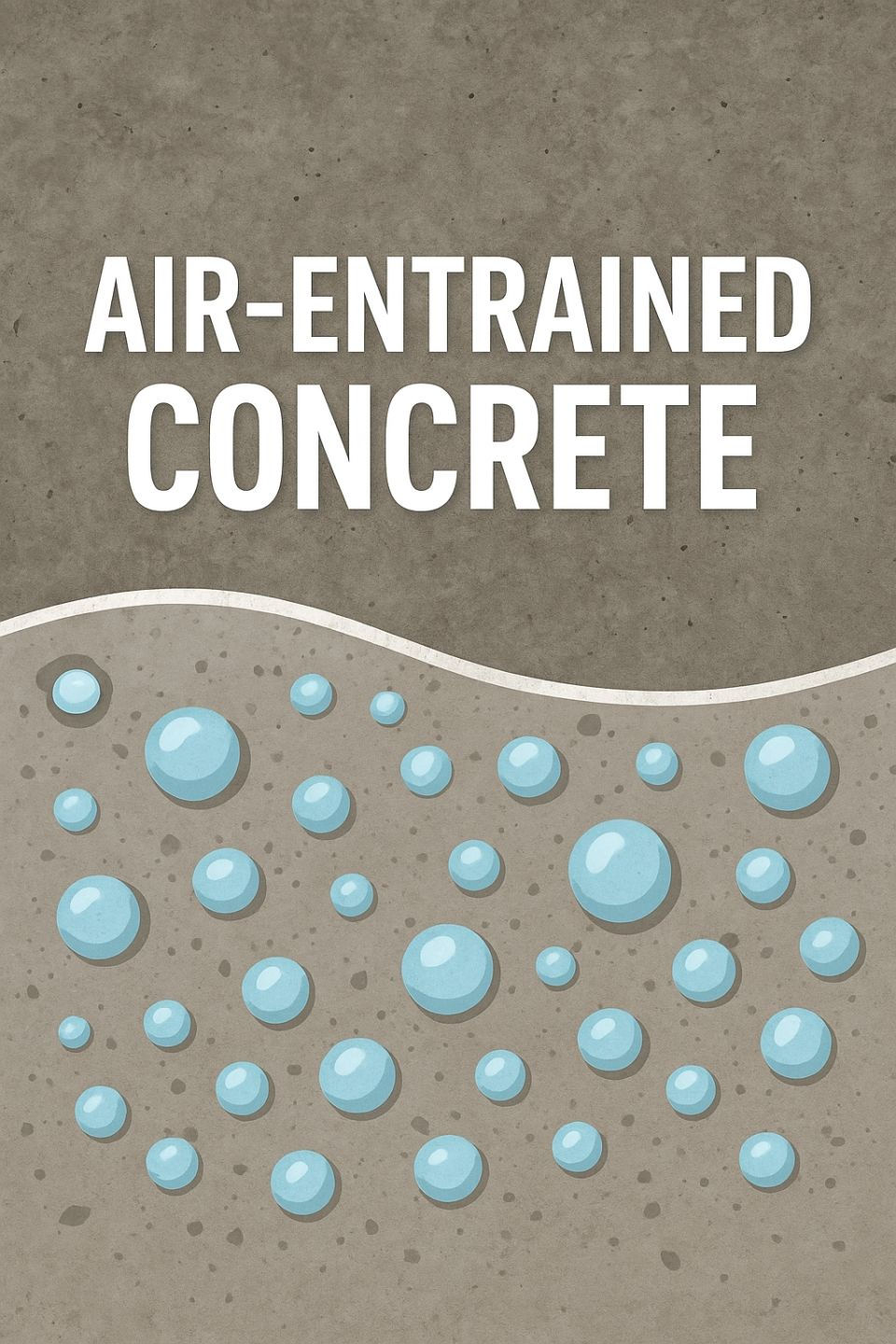Air-Entrained Concrete in Ontario: Essential OBC Requirements for Durability
- Yousef Davari
- Oct 28
- 2 min read
Updated: Dec 2
Ontario’s concrete structures face extreme environmental challenges — from constant freeze-thaw cycles to de-icing salts and moisture exposure. Without proper protection, these factors can cause cracking and surface scaling over time.
To ensure long-term performance, the Ontario Building Code (OBC) requires the use of air-entrained concrete in exposed applications. By introducing microscopic air bubbles into the mix, water can expand safely during freezing, improving durability and lifespan.

Why Air-Entrained Concrete Matters
In cold climates, water freezing inside concrete pores expands by about 9%, creating internal pressure that damages the surface. Air-entrained concrete solves this by providing space for expansion.
Key benefits:
Prevents Cracking & Scaling – Resists repeated freeze-thaw cycles.
Improves Durability – Protects against de-icing salts and sulfates.
Maintains Integrity – Extends the service life of slabs and foundations.
OBC & CSA Requirements

Compliance with the Ontario Building Code and CSA A23.1 is mandatory for all exterior concrete exposed to moisture or freezing conditions.
Minimum Air Content by Aggregate Size:
Nominal Max. Aggregate Size | Min. Air Content | Tolerance |
|---|---|---|
≤ 19 mm (¾ in) | 6 % | ± 1.5 % |
20–37 mm (¾–1½ in) | 5.5 % | ± 1.5 % |
> 37 mm (1½ in) | 5 % | ± 1.5 % |
Additional Requirements:
Garage Floors & Exterior Flatwork: 5–8 % air content.
Freeze-Thaw Exposure: Air-entrainment mandatory.
Exposure Class C-2: Required for contact with de-icing salts.
Testing: Conduct on-site using CSA A23.2-4C (Pressure Method).
How Air-Entrainment Works
Air-entraining agents (AEA) form microscopic bubbles — 10 to 100 microns — that act as pressure-relief chambers. This allows frozen water to expand safely without damaging the concrete matrix.
Best practices:
Balance durability and strength in the mix design.
Avoid over-vibration or over-finishing, which can remove protective air voids.
Ensure Your Concrete Meets Ontario’s Durability Standards
We help engineers and contractors design, inspect, and optimize concrete mixes to meet OBC durability standards and structural reliability.
Applications & Exceptions
Typical uses:
Exterior slabs, sidewalks, driveways
Garage floors, patios, and steps
Foundations, footings, grade beams
Exceptions:
Interior slabs not exposed to freezing.
High-finish surfaces (with engineer approval) where lower air content is desired.
Factors Affecting Air Content
Cement Type: High Alkali → More Air; High Fineness → Less air.
Aggregates: Clean, rounded sand helps; dust or clay reduces air.
Water Quality: Soft water and detergents increase air.
Temperature: Cooler concrete holds more air; warm mixes lose it.
Mixing & Vibration: Over-mixing or worn blades can reduce air content.
For Contractors: Quick Recommendations
Test air content for each delivered batch.
Use proper AEA dosage per approved mix design.
Avoid excessive vibration during placement.
Use sealers or waterproof coatings for added surface protection.

Conclusion: Building Durable Concrete with Confidence
Air-entrainment isn’t optional in Ontario — it’s an OBC requirement for long-lasting, resilient concrete. Proper mix design, testing, and quality control ensure your projects meet both structural and durability standards.
Our team at Parsways Inc. ensures each design meets Ontario’s durability standards — not just on paper, but in performance.
Co-authored by Yousef Davari and Negin Amani.


